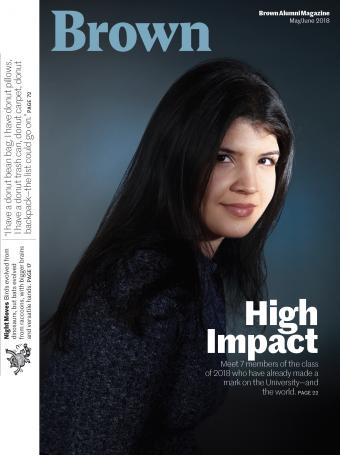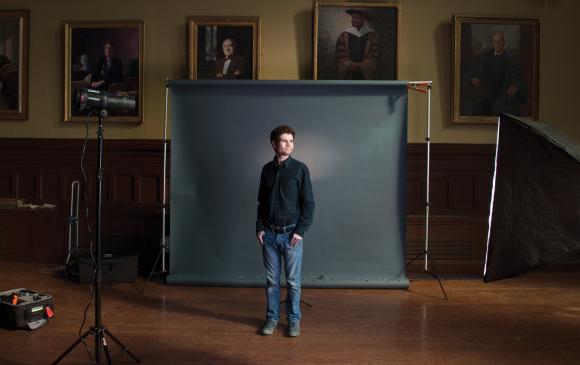PROVIDENCE, R.I. [Brown University] — Eric Rosen wants kids to know that coding is cool. As the president of Brown’s Google Ignite CS Initiative, he gets Brown students to teach coding and robotics in local schools. Whether it’s creating a program that turns English into Pig Latin or explaining how Google Maps decides the best route for people to take, Rosen brings activities into the classroom that he hopes will make computer science fun and accessible to everyone.
“I love actually getting to be a teacher because I’m learning, too,” Rosen says. “It’s less about teaching students a coding language, and more about showing them how computer science relates to everything around them.”
Outside the classroom, Rosen has spent a year and a half developing his own research projects in the Brown Robotics Lab. Starting as a sophomore, Rosen worked with graduate student David Whitney to design an algorithm that allows robots to decide when to ask questions in response to human commands.
“The goal is for robots to know what they themselves are confused about,” Rosen says.

A person might point and ask a robot to pick up a cup, but if there are two cups next to each other the robot will ask which one, Rosen explains. The farther apart the cups, the less likely the robot will have to ask a question.
The idea of improving human-robot interactions fascinated Rosen, leading him and Whitney to try and figure out how people could work more efficiently with robots from afar. “We wondered, ‘Can we use how humans move around to make a really intuitive way for the human to control the robot?’” Rosen says.
Rosen and his team paired robots with virtual reality software, allowing the robot to respond directly to human movement. Strapping on a Vive headset and nunchucks in the Brown Robotics Lab, Rosen can make a robot in an MIT laboratory 41 miles away stack a series of cups perfectly, as one video test shows. The headset allows Rosen to view a representation of what the robot itself sees. By using the nunchuck in his own hand to pick up the cup, which is three dimensionally projected in front of him, the robot’s arm will follow suit.
For now, robots and humans in Rosen’s lab are working together to practice folding laundry, but bigger plans are in store. The goal is for robots and humans to join forces on difficult but potentially life-saving tasks too dangerous for people to do on their own, such as disabling a malfunctioning nuclear reactor.
After spending much of his undergraduate career engaged in PhD-level research, Rosen will continue his work with the Brown Robotics Lab following graduation as a postdoctoral student. Still, Rosen keeps the door to his lab open to the high school and middle school students he works with and is always eager to give them a tour and test out equipment.
“Students explode for robots,” Rosen says. “I want my passion and love of CS to bleed into them.”
— Jack Brook, Class of 2019


